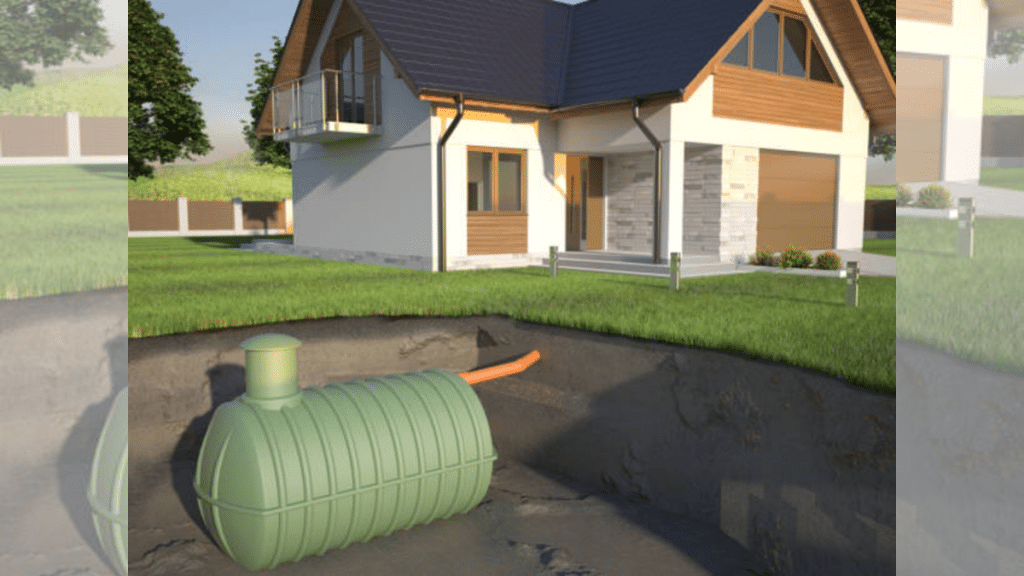When it comes to residential wastewater treatment, homeowners typically face two main options: aerobic and traditional septic systems. While both serve the same purpose of treating and disposing of household wastewater, they differ significantly in operation, maintenance, cost, and environmental impact. Choosing the right system depends on your property’s needs, budget, and environmental considerations. Let’s break down the key differences, benefits, and drawbacks to help you make an informed decision.
How Traditional Septic Systems Work
Traditional, or anaerobic, septic systems are the most common type of system in residential settings. They operate without oxygen and rely on naturally occurring bacteria to break down solid waste in the septic tank. Wastewater separates into three layers: solids settle at the bottom, a middle layer of liquid flows to the drain field, and oils float to the top. The liquid effluent is filtered into the soil, where further treatment occurs.
Traditional systems are typically simpler in design, consisting of a septic tank and a drain field. This simplicity makes them cost-effective to install and maintain. However, the soil in the drain field must meet certain conditions to properly filter and absorb effluent, which may not be ideal for all properties.
How Aerobic Septic Systems Work
Aerobic septic systems introduce oxygen into the treatment process to promote the growth of aerobic bacteria. These bacteria are more efficient at breaking down waste, resulting in cleaner effluent. Aerobic systems typically include an aeration chamber, a treatment tank, and a discharge method, which may involve sprinklers or additional filtration.
Because of their advanced treatment capabilities, aerobic systems are often used in areas with poor soil quality, high water tables, or environmental sensitivity. They are also ideal for properties with limited space for a traditional drain field. However, their complexity comes with higher installation and maintenance costs.
Comparing Installation Costs
Installation costs are a significant factor when choosing a septic system. Traditional systems are generally less expensive to install because of their straightforward design. Costs vary depending on tank size, soil conditions, and local regulations, but homeowners can typically expect to spend $3,000 to $7,000.
Aerobic systems, on the other hand, can cost $10,000 or more due to their more complex components. The need for electricity to power the aerator and additional equipment adds to the overall expense. While the upfront cost is higher, some homeowners find the advanced treatment capabilities and suitability for challenging sites worth the investment.
Maintenance Requirements
Maintenance is another crucial consideration. Traditional systems are relatively low-maintenance, requiring regular pumping (every 3 to 5 years) to remove solids and prevent clogs in the drain field. Homeowners must also avoid flushing harmful substances, such as grease or non-biodegradable items, to keep the system functioning properly.
Aerobic systems demand more frequent maintenance. They typically require quarterly or biannual inspections to ensure the aerator and other components are functioning correctly. Routine cleaning or replacement of filters and additional pumping may also be needed. While these systems are highly effective, their complexity makes professional maintenance essential to avoid costly repairs.
Environmental Impact
Both systems have environmental pros and cons, but aerobic systems generally offer superior environmental performance. Because they break down waste more thoroughly, they produce cleaner effluent. This reduces the risk of contamination to groundwater and nearby water bodies, and it also makes them particularly valuable in environmentally sensitive areas or regions with strict regulations.
While effective in suitable soil conditions, traditional systems rely heavily on the natural filtration capacity of the soil. If the drain field is not properly designed or maintained, there is a greater risk of effluent leaching into groundwater. However, their simplicity and lower energy requirements make them more sustainable in areas where they function well.
If you’re interested in learning more about your carbon footprint and how your household decisions affect it, calculate your carbon footprint on the Oregon.gov website.
Performance and Suitability
Aerobic systems shine in areas where traditional systems might struggle. Properties with clay or sandy soil, limited space, or a high water table benefit from the advanced treatment capabilities of aerobic systems. They also perform well for larger households or homes with high water usage, as they handle higher wastewater volumes more efficiently.
Traditional systems are ideal for properties with sufficient space and suitable soil conditions. They are a reliable, cost-effective solution for many rural and suburban areas because they require less ongoing effort and energy.
Making the Right Choice
When deciding between an aerobic and a traditional septic system, consult a trusted local septic service to assess your property’s specific needs. They can evaluate soil conditions, water usage, and local regulations to help determine which system is best for your home. For instance, A Aaron Super Rooter has been serving homeowners in the Miami area with reliable septic solutions. Their experienced technicians can guide you through the decision-making process. This Miami septic service will design, install, repair, pump, or maintain your system to meet your needs.
Turn Knowledge into Action
Choosing the right septic system is an investment in your property’s long-term functionality and environmental responsibility. Both aerobic and traditional systems offer distinct advantages, and the best option depends on factors such as your budget, property characteristics, and maintenance preferences. For expert advice and assistance, turn to the professionals at A Aaron Super Rooter. Whether you need guidance on selecting a system, routine maintenance, or emergency repairs, their team is equipped to handle all your septic needs with care and precision.
